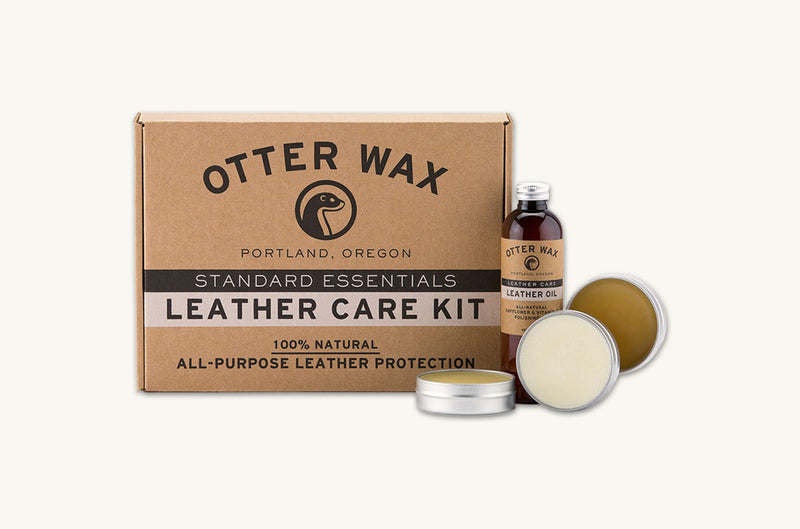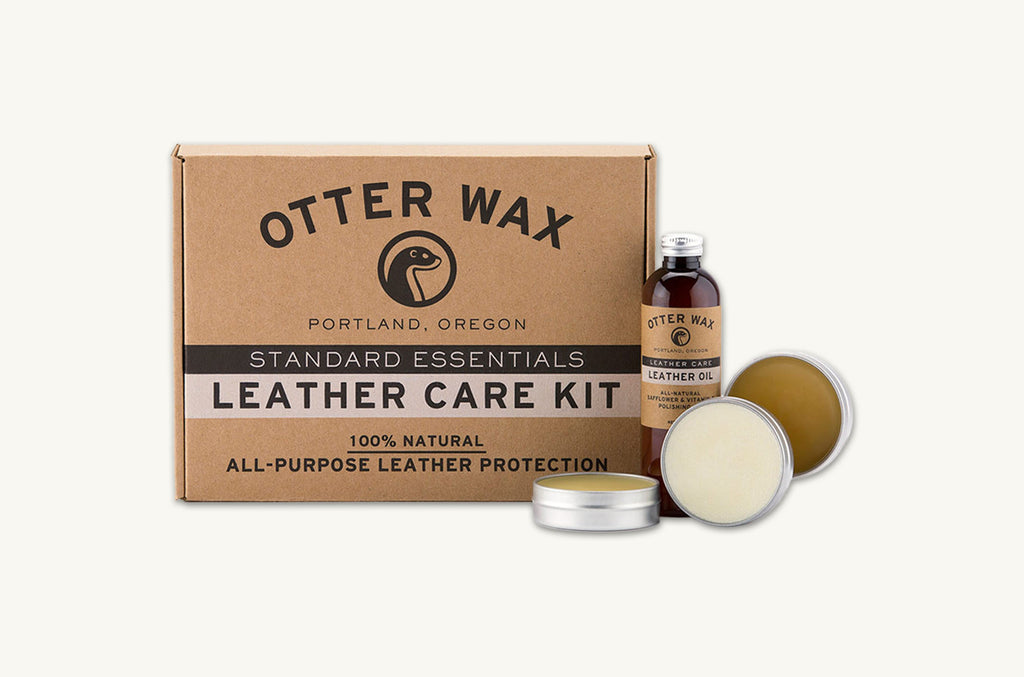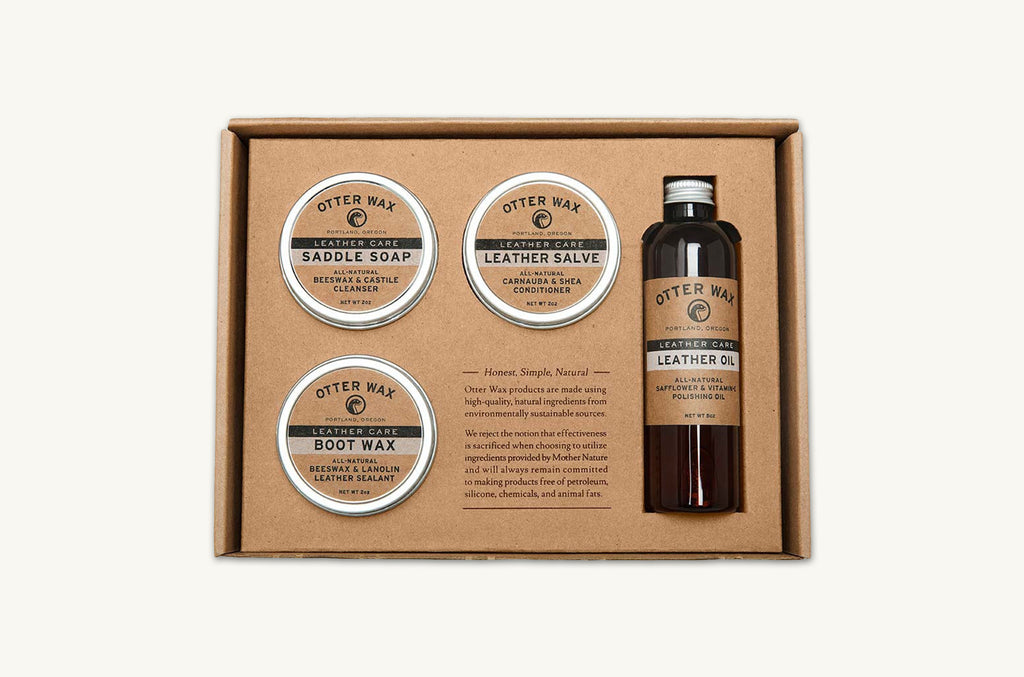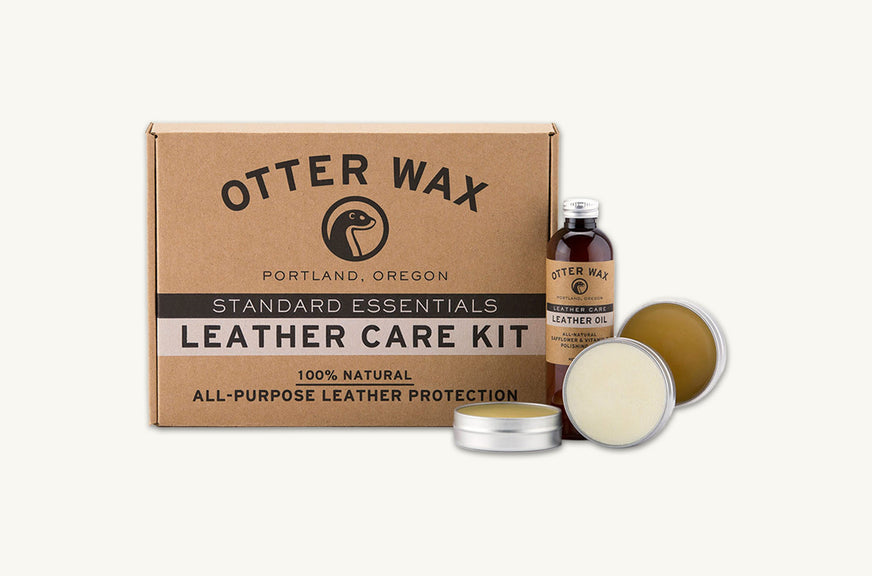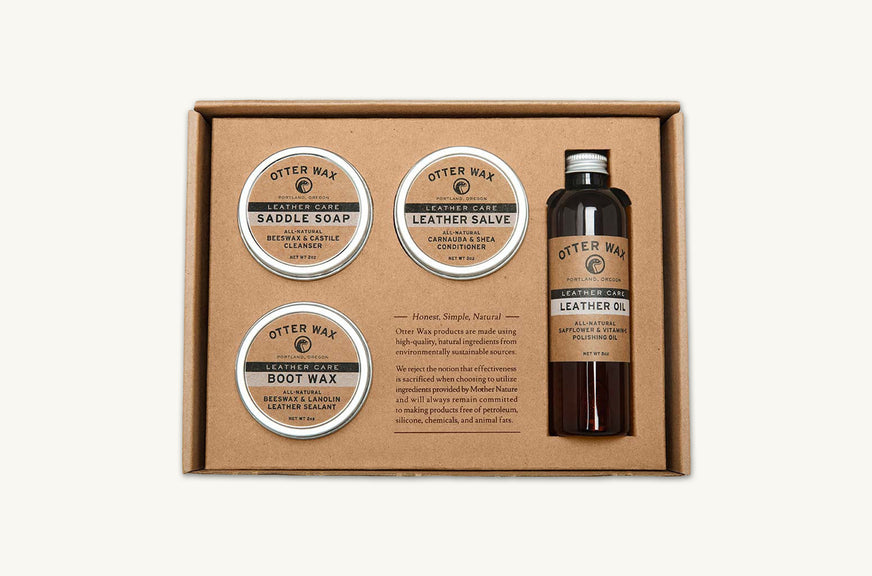Step 1: Saddle Soap (Beeswax & Castile)
Use the saddle soap to gently clean your leather and remove stains. Use a rag with the saddle soap and some water and use a circular motion to build a lathery foam. Wipe off the white residue and let air dry.
Step 2: Leather Salve (Carnauba & Shea Butter)
Use the leather salve to moisturize your leather. It will restore oils, revive suppleness, and repair cracking from dehydration. Wipe it into the leather just as you would when moisturizing your own skin. A white waxy residue may form, this means the leather has successfully absorbed the moisturizer. Then use a horsehair brush (or a rag) to buff the white waxy residue to a shine.
Step 3A: Leather Oil (Safflower, Flaxseed, & Vitamin-E)
As a final step use the leather oil to revive the natural shine and to give it that nice polished look. Pour some leather oil onto a rag and rub into the leather. Leather oil can be used several times per year while the saddle soap and salve may only be needed once or twice per year.
Step 3B: Boot Wax (Beeswax & Lanolin)
If you're looking for a waterproofing or stain resistant treatment the boot wax may be your final step instead of the leather oil. Otter Wax calls it "boot" wax but it can be used for any shoes that you would like to finish with a waterproof seal that goes on thick. It contains beeswax to naturally repel water, and the lanolin oil which comes from the wool of sheep. In the same way that lanolin protects sheep from the harsh effects of the environment, it helps protect leather by sealing in moisture and repelling water and stains. Because the boot wax goes on thick please test first in a small area to make sure you'll be happy with the desired result.
